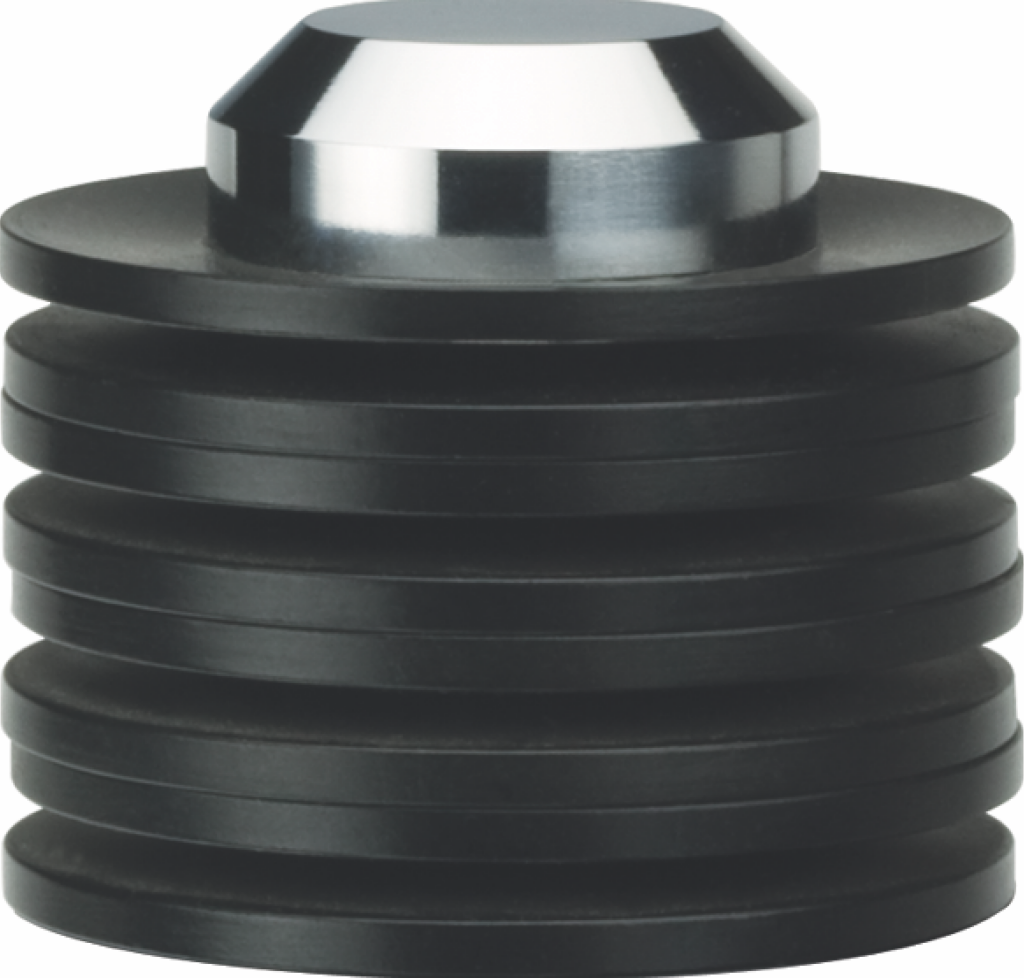Written by Ken Hagan Division
President (SPIROL Ohio Division)
SPIROL International Corporation

A stack of disc springs. Unlike Belleville washers, disc springs are designed to provide a repeatable force-travel relationship and are superior for use in dynamic applications.
Belleville washers and disc springs are conically shaped spring washers, typically made from spring steels and designed to be loaded axially. Both can provide a higher degree of force in a relatively compact area compared to coil springs or wave springs.
Although the terms “Belleville washers” and “disc springs” are often used interchangeably, the two products have some technical, design, and application differences.
Belleville washers refer to the conical-shaped spring washers originally patented by Julien Belleville. They’re considered to be the strongest type of spring washers available, but only when used in static applications, (which is what they were made for). They’re primarily used in heavy-duty applications, fastened together with a bolt where the load is considered static.
These washers can help maintain preload in bolted joints, indicating the correct preload based on the gap between adjacent washers. They can also help with bolt creep or stress relaxation between a bolt and a washer.
Belleville washers and disc springs are designed to provide a high load in a small space and to maintain tension or preload in various applications.
Disc springs have a conical shape with a slight curvature. They consist of one or more stacked conical discs, each with a hole in the center. The outer edge of the discs is typically flat, while the inner edge is curved. They can be used as a single piece or stacked in a series or parallel to achieve the desired load and force-deflection performance. Stacking multiple discs makes it possible to adjust the overall stiffness of the spring system.
Unlike Belleville washers, disc springs are designed specifically to provide a repeatable force-travel relationship. They have a long and predictable fatigue life in dynamic or cycling applications. Disc springs can be statically loaded continuously or intermittently, or dynamically subjected to continuous load cycling.
Disc springs are commonly used in several applications, including pressure controls and regulators, vehicle braking systems, valves, shock absorbers, clutches, friction assemblies, and joints where thermal and weight cycling occurs.
A defined list of standard Disc Spring sizes and associated load and deflection characteristics is available in DIN EN 16983 (formerly DIN 2093). Selecting the most appropriate disc spring or disc stack configuration can be challenging. It’s recommended designers partner with experts in application engineering to determine the ideal choice.
You may also like:
Filed Under: Fastener Engineering • Fasteners, Fastener Engineering • Springs, Fastener washers and spacers







Tell Us What You Think!